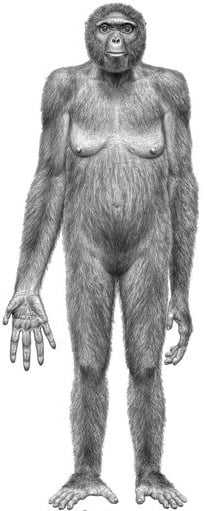Do You Know Who the First Humans Were
#DoYouKnow, #HumanEvolution, #FirstHumans, #Anthropology, #Prehistory, #ScienceAndHistory, #HumanOrigins
KNOWLEDGE & EDUCATION
7/20/20252 min read


Do you know that modern humans—Homo sapiens—are only the last step in a journey that began millions of years ago? We share our roots with ancient species that walked the Earth long before us. But who were the first humans, and how did we evolve from primitive beings to the intelligent, tool-making species we are today? Let’s dive into the story of our origins.
1. What Defines a “Human”?
The term "human" often refers to Homo sapiens, but before us, there were several species in the Homo genus, such as Homo habilis and Homo erectus. These species shared human-like traits like tool use, upright walking, and larger brains. Scientists consider these early species as "human ancestors."
2. The Evolutionary Timeline
Human evolution spans over 6 million years, beginning when our ancestors split from a common ancestor we share with chimpanzees. Key stages include:
Australopithecus afarensis (3.9–2.9 million years ago): Famous for “Lucy,” they walked upright but still climbed trees.
Homo habilis (2.4–1.4 million years ago): Known as “handy man” for making stone tools.
Homo erectus (1.9 million years ago–110,000 years ago): The first to control fire and migrate out of Africa.
Neanderthals (Homo neanderthalensis): Lived alongside Homo sapiens but eventually went extinct.
Homo sapiens (300,000 years ago–present): Our direct ancestors.
3. The First Homo Sapiens
Fossil evidence shows that Homo sapiens first appeared in Africa around 300,000 years ago. Sites like Jebel Irhoud (Morocco) and Omo Kibish (Ethiopia) reveal early human remains and tools. These first humans had:
Larger brains.
Advanced tools and weapons.
Artistic skills—such as cave paintings.
4. Out-of-Africa Migration
Around 60,000–70,000 years ago, Homo sapiens began migrating out of Africa into Europe, Asia, and Australia. During these migrations, they:
Interacted and even interbred with Neanderthals and Denisovans.
Adapted to different climates and environments.
Spread language, culture, and technology across continents.
5. What Made Early Humans Unique?
Several features separated Homo sapiens from other species:
Complex Language: Allowed communication of abstract ideas.
Art and Culture: Cave art, jewelry, and burial rituals.
Toolmaking: From simple stone tools to advanced hunting weapons.
Social Structure: Larger, organized groups with cooperation.
6. Life of the First Humans
The first humans were hunter-gatherers, relying on hunting animals and gathering fruits, nuts, and plants. They:
Used fire for warmth and cooking.
Developed early shelters and clothing from animal skins.
Lived in close-knit tribes to survive harsh environments.
7. Lessons from Our Ancestors
Studying early humans shows how adaptation and cooperation shaped our survival. Today’s technologies and social structures evolved from these ancient practices.
Conclusion
Do you know that every human alive today can trace their ancestry to a small group of Homo sapiens who lived in Africa 200,000 years ago? Our journey from primitive beings to global citizens is a story of survival, intelligence, and curiosity.
Knowledge
Empowering minds with reliable educational content daily.
Newsletter Signup
© 2025 DoYouKnow. All rights reserved.
Stay Ahead of the Trends – Join Our Newsletter
